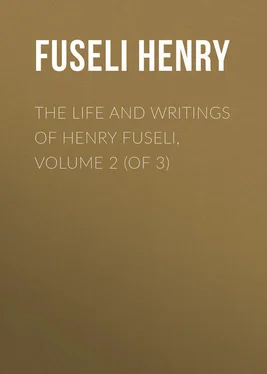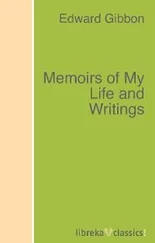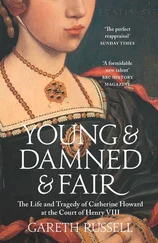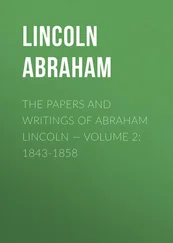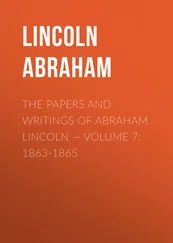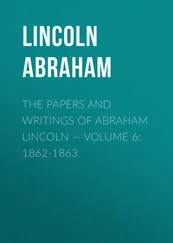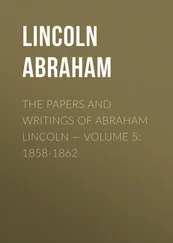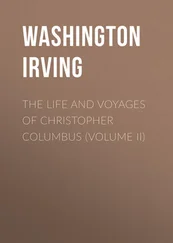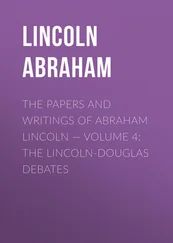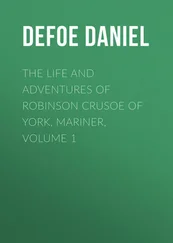Henry Fuseli - The Life and Writings of Henry Fuseli, Volume 2 (of 3)
Здесь есть возможность читать онлайн «Henry Fuseli - The Life and Writings of Henry Fuseli, Volume 2 (of 3)» — ознакомительный отрывок электронной книги совершенно бесплатно, а после прочтения отрывка купить полную версию. В некоторых случаях можно слушать аудио, скачать через торрент в формате fb2 и присутствует краткое содержание. Жанр: visual_arts, foreign_antique, foreign_prose, на английском языке. Описание произведения, (предисловие) а так же отзывы посетителей доступны на портале библиотеки ЛибКат.
- Название:The Life and Writings of Henry Fuseli, Volume 2 (of 3)
- Автор:
- Жанр:
- Год:неизвестен
- ISBN:нет данных
- Рейтинг книги:5 / 5. Голосов: 1
-
Избранное:Добавить в избранное
- Отзывы:
-
Ваша оценка:
- 100
- 1
- 2
- 3
- 4
- 5
The Life and Writings of Henry Fuseli, Volume 2 (of 3): краткое содержание, описание и аннотация
Предлагаем к чтению аннотацию, описание, краткое содержание или предисловие (зависит от того, что написал сам автор книги «The Life and Writings of Henry Fuseli, Volume 2 (of 3)»). Если вы не нашли необходимую информацию о книге — напишите в комментариях, мы постараемся отыскать её.
The Life and Writings of Henry Fuseli, Volume 2 (of 3) — читать онлайн ознакомительный отрывок
Ниже представлен текст книги, разбитый по страницам. Система сохранения места последней прочитанной страницы, позволяет с удобством читать онлайн бесплатно книгу «The Life and Writings of Henry Fuseli, Volume 2 (of 3)», без необходимости каждый раз заново искать на чём Вы остановились. Поставьте закладку, и сможете в любой момент перейти на страницу, на которой закончили чтение.
Интервал:
Закладка:
The inspiration of Michael Angelo was followed by the milder genius of Raphael Sanzio, 37 37 Raphael Sanzio, of Urbino, died at Rome 1520, at the age of 37.
the father of dramatic painting; the painter of humanity; less elevated, less vigorous, but more insinuating, more pressing on our hearts, the warm master of our sympathies. What effect of human connexion, what feature of the mind, from the gentlest emotion to the most fervid burst of passion, has been left unobserved, has not received a characteristic stamp from that examiner of man? M. Angelo came to nature, nature came to Raphael – he transmitted her features like a lucid glass, unstained, unmodified. We stand with awe before M. Angelo, and tremble at the height to which he elevates us – we embrace Raphael, and follow him wherever he leads us. Energy, with propriety of character and modest grace, poise his line and determine his correctness. Perfect human beauty he has not represented; no face of Raphael's is perfectly beautiful; no figure of his, in the abstract, possesses the proportions that could raise it to a standard of imitation: form to him was only a vehicle of character or pathos, and to those he adapted it in a mode and with a truth which leaves all attempts at emendation hopeless. His invention connects the utmost stretch of possibility with the most plausible degree of probability, in a manner that equally surprises our fancy, persuades our judgment, and affects our heart. His composition always hastens to the most necessary point as its centre, and from that disseminates, to that leads back as rays, all secondary ones. Group, form, and contrast are subordinate to the event, and common-place ever excluded. His expression, in strict unison with and decided by character, whether calm, animated, agitated, convulsed, or absorbed by the inspiring passion, unmixed and pure, never contradicts its cause, equally remote from tameness and grimace: the moment of his choice never suffers the action to stagnate or to expire; it is the moment of transition; the crisis big with the past and pregnant with the future. – If, separately taken, the line of Raphael has been excelled in correctness, elegance, and energy; his colour far surpassed in tone, and truth, and harmony; his masses in roundness, and his chiaroscuro in effect – considered as instruments of pathos, they have never been equalled; and in composition, invention, expression, and the power of telling a story, he has never been approached.
Whilst the superior principles of the art were receiving the homage of Tuscany and Rome, the inferior but more alluring charm of colour began to spread its fascination at Venice, from the pallet of Giorgione da Castel Franco 38 38 Giorgio Barbarelli, from his size and beauty called Giorgione, was born at Castel Franco, in the territory of Venice, 1478, and died at Venice, 1511.
, and irresistibly entranced every eye that approached the magic of Titiano Vecelli of Cador. 39 39 Titiano Vecelli, or, as the Venetians call him, Tiziàn, born at Cador in the Friulese, died at Venice, 1576, aged 99.
To no colourist before or after him, did Nature unveil herself with that dignified familiarity in which she appeared to Titiano. His organ, universal and equally fit for all her exhibitions, rendered her simplest to her most compound appearances with equal purity and truth. He penetrated the essence and the general principle of the substances before him, and on these established his theory of colour. He invented that breadth of local tint which no imitation has attained; and first expressed the negative nature of shade: his are the charms of glazing, and the mystery of reflexes, by which he detached, rounded, connected, or enriched his objects. His harmony is less indebted to the force of light and shade, or the artifices of contrast, than to a due balance of colour, equally remote from monotony and spots. His backgrounds seem to be dictated by nature. Landscape, whether it be considered as the transcript of a spot, or the rich combination of congenial objects, or as the scene of a phænomenon, dates its origin from him: he is the father of portrait-painting, of resemblance with form, character with dignity, and costume with subordination.
Another charm was yet wanting to complete the round of art – harmony: it appeared with Antonio Læti, 40 40 The birth and life of Antonio Allegri, or, as he called himself, Læti, surnamed Correggio, is more involved in obscurity than the life of Apelles. Whether he was born in 1490 or 1494 is not ascertained; the time of his death in 1534 is more certain. The best account of him has undoubtedly been given by A. R. Mengs in his Memorie concernenti la vita e le opere di Antonio Allegri denominato il Correggio . Vol. ii. of his works, published by the Spaniard D. G. Niccola d'Azara.
called Correggio, whose works it attended like an enchanted spirit. The harmony and the grace of Correggio are proverbial: the medium which by breadth of gradation unites two opposite principles, the coalition of light and darkness by imperceptible transition, are the element of his style. – This inspires his figures with grace, to this their grace is subordinate: the most appropriate, the most elegant attitudes were adopted, rejected, perhaps sacrificed to the most awkward ones, in compliance with this imperious principle: parts vanished, were absorbed, or emerged in obedience to it. This unison of a whole, predominates over all that remains of him, from the vastness of his cupolas to the smallest of his oil-pictures. – The harmony of Correggio, though assisted by exquisite hues, was entirely independent of colour: his great organ was chiaroscuro in its most extensive sense; compared with the expanse in which he floats, the effects of Lionardo da Vinci are little more than the dying ray of evening, and the concentrated flash of Giorgione discordant abruptness. The bland central light of a globe, imperceptibly gliding through lucid demitints into rich reflected shades, composes the spell of Correggio, and affects us with the soft emotions of a delicious dream.
Such was the ingenuity that prepared, and such the genius that raised to its height the fabric of modern art. Before we proceed to the next epoch, let us make an observation.
Form not your judgment of an artist from the exceptions which his conduct may furnish, from the exertions of accidental vigour, some deviations into other walks, or some unpremeditated flights of fancy, but from the predominant rule of his system, the general principle of his works. The line and style of Titian's design, sometimes expand themselves like those of Michael Angelo. His Abraham prevented from sacrificing Isaac; his David adoring over the giant-trunk of Goliath; the Friar escaping from the murderer of his companion in the forest, equal in loftiness of conception and style of design, their mighty tone of colour and daring execution: the heads and groups of Raphael's frescoes and portraits sometimes glow and palpitate with the tints of Titian, or coalesce in masses of harmony, and undulate with graces superior to those of Correggio; who in his turn once reached the highest summit of invention, when he embodied silence and personified the mysteries of love in the voluptuous group of Jupiter and Io; and again exceeded all competition of expression in the divine features of his Ecce-Homo. But these sudden irradiations, these flashes of power are only exceptions from their wonted principles; pathos and character own Raphael for their master, colour remains the domain of Titian, and harmony the sovereign mistress of Correggio.
The resemblance which marked the two first periods of ancient and modern art vanishes altogether as we extend our view to the consideration of the third, or that of refinement, and the origin of schools. The pre-eminence of ancient art, as we have observed, was less the result of superior powers, than of simplicity of aim and uniformity of pursuit. The Helladic and the Ionian schools appear to have concurred in directing their instruction to the grand principles of form and expression: this was the stamen which they drew out into one immense connected web. The talents that succeeded genius, applied and directed their industry and polish to decorate the established system, the refinements of taste, grace, sentiment, colour, adorned beauty, grandeur, and expression. The Tuscan, the Roman, the Venetian, and the Lombard schools, whether from incapacity, want of education, of adequate or dignified encouragement, meanness of conception, or all these together, separated, and in a short time substituted the medium for the end. Michael Angelo lived to see the electric shock which his design and style had given to art, propagated by the Tuscan and Venetian schools, as the ostentatious vehicle of puny conceits and emblematic quibbles, or the palliative of empty pomp and degraded luxuriance of colour. He had been copied but was not imitated by Andrea Vannucchi, surnamed Del Sarto, who in his series of pictures on the life of John the Baptist, in preference adopted the meager style of Albert Durer. The artist who appears to have penetrated deepest to his mind, was Pelegrino Tibaldi, of Bologna; 41 41 Pelegrino Tibaldi died at Milano in 1592, aged 70.
celebrated as the painter of the frescoes in the academic institute of that city, and as the architect of the Escurial under Philip II. The compositions, groups, and single figures of the institute exhibit a singular mixture of extraordinary vigour and puerile imbecility of conception, of character and caricature, of style and manner. Polypheme groping at the mouth of his cave for Ulysses, and Æolus granting him favourable winds, are striking instances of both: than the Cyclops, Michael Angelo himself never conceived a form of savage energy, with attitude and limbs more in unison; whilst the god of winds is degraded to a scanty and ludicrous semblance of Thersites, and Ulysses with his companions travestied by the semi-barbarous look and costume of the age of Constantine or Attila; the manner of Michael Angelo is the style of Pelegrino Tibaldi; from him Golzius, Hemskerk, and Spranger borrowed the compendium of the Tuscan's peculiarities. With this mighty talent, however, Michael Angelo seems not to have been acquainted, but by that unaccountable weakness incident to the greatest powers, and the severe remembrancer of their vanity, he became the superintendant and assistant tutor of the Venetian Sebastiano 42 42 Sebastiano, afterwards called Del Piombo from the office of the papal signet, died at Rome in 1547, aged 62.
, and of Daniel Ricciarelli, of Volterra 43 43 Daniel Ricciarelli, of Volterra, died in 1566, aged 57.
; the first of whom, with an exquisite eye for individual, had no sense for ideal colour, whilst the other rendered great diligence and much anatomical erudition, useless by meagerness of line and sterility of ideas: how far Michael Angelo succeeded in initiating either in his principles, the far-famed pictures of the resuscitation of Lazarus, by the first, once in the cathedral of Narbonne, and since inspected by us all at the Lyceum here, 44 44 Now the first ornament of the exquisite collection of J. J. Angerstein, Esq. – Since purchased for the National Gallery. – Editor.
and the fresco of the descent from the cross, in the church of La Trinità del Monte, at Rome, by the second, sufficiently evince: pictures which combine the most heterogeneous principles. The group of Lazarus in Sebastian del Piombo's and that of the women, with the figure of Christ, in Daniel Ricciarelli's, not only breathe the sublime conception that inspired, but the master-hand that shaped them: offsprings of Michael Angelo himself, models of expression, style, and breadth, they cast on all the rest an air of inferiority, and only serve to prove the incongruity of partnership between unequal powers; this inferiority however is respectable, when compared with the depravations of Michael Angelo's style by the remainder of the Tuscan school, especially those of Giorgio Vasari, 45 45 Giorgio Vasari, of Arezzo, died in 1584, aged 68.
the most superficial artist and the most abandoned mannerist of his time, but the most acute observer of men and the most dextrous flatterer of princes. He overwhelmed the palaces of the Medici and of the popes, the convents and churches of Italy, with a deluge of mediocrity, commended by rapidity and shameless 'bravura' of hand: he alone did more work than all the artists of Tuscany together, and to him may be truly applied, what he had the insolence to say of Tintoretto, that he turned the art into a boy's toy.
Интервал:
Закладка:
Похожие книги на «The Life and Writings of Henry Fuseli, Volume 2 (of 3)»
Представляем Вашему вниманию похожие книги на «The Life and Writings of Henry Fuseli, Volume 2 (of 3)» списком для выбора. Мы отобрали схожую по названию и смыслу литературу в надежде предоставить читателям больше вариантов отыскать новые, интересные, ещё непрочитанные произведения.
Обсуждение, отзывы о книге «The Life and Writings of Henry Fuseli, Volume 2 (of 3)» и просто собственные мнения читателей. Оставьте ваши комментарии, напишите, что Вы думаете о произведении, его смысле или главных героях. Укажите что конкретно понравилось, а что нет, и почему Вы так считаете.
